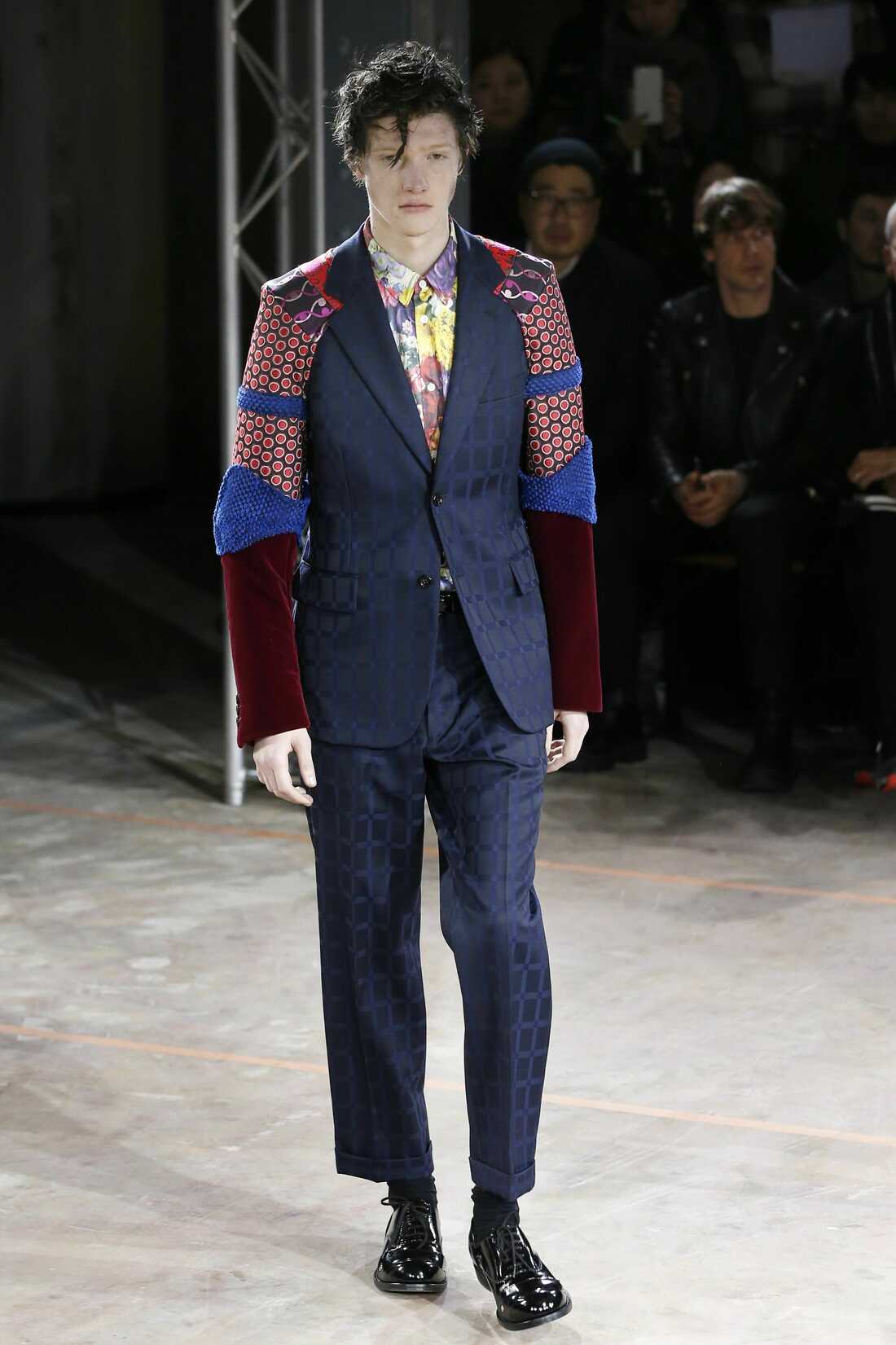So long, skinny jeans. See you in the next cycle : NPR

There is a certain reason behind the life and death of a fashion trend.
Image by Alicia Zheng/NPR
hide caption
toggle caption
Image by Alicia Zheng/NPR

There is a certain reason behind the life and death of a fashion trend.
Image by Alicia Zheng/NPR
When Moe Black was a teenager, you could only wear one style of pants.
“If you wore anything other than skinny jeans, you were, like, weird,” said Black, now a 29-year-old fashion content creator. At the time, skinny jeans had fashion and pop culture in a stretch denim constriction.
Black recalled drawing inspiration from the style of stars she saw on MTV and VH1, telling NPR that she looked up to bands like Green Day.
“A lot of these groups were anti-government and anti-war,” she said. “And I felt like the way they dressed was such a symbol of what they believed.”
His uniform: side-dyed hair, oversized graphic tee, checkerboard Vans, and jeans so tight they looked painted on. But as ubiquitous as they once were, skinny jeans are out. And looser styles inspired by the 1990s are in style.
So what happened?
It’s not just pants that come and go. Everything from shoes to color palettes to the entire aesthetic cycle in and out of style. And following all this can make you dizzy. But there is some logic to how it all works.
The life and death of a trend
The life of a trend begins with a trendsetter.
“It traditionally starts with the designers and the people who make the clothes that we can buy,” said Ashlyn Greer, CEO and founder of Fashivly, a personal styling company.
During the first year of the trend life cycle, a new style is invented – this may be due to musical or artistic subcultures or fashion designers experimenting with new forms or drawing from archives.

Model Shalom Harlow walks the catwalk wearing clothes from the grunge-inspired Marc Jacobs collection for the Perry Ellis brand in November 1992.
Thomas Iannaccone/WWD via Getty Images
hide caption
toggle caption
Thomas Iannaccone/WWD via Getty Images

Model Shalom Harlow walks the catwalk wearing clothes from the grunge-inspired Marc Jacobs collection for the Perry Ellis brand in November 1992.
Thomas Iannaccone/WWD via Getty Images
Take grunge, for example. In 1992, fashion designer Marc Jacobs launched a collection for Perry Ellis paying homage to the Pacific Northwest alternative rock movement.
This collection put the style’s loose silhouettes and plaid flannels on the fashion map, Greer said.
“And then now, all of a sudden, there’s a Vogue editorial on grunge clothing,” she said. “And now all these other people in mainstream culture are starting to embrace this.”
The media and early adopters of a trend – like celebrities, influencers, or your fashionable friend – spread the trend to the masses. At this point, retailers are scrambling to produce the clothes consumers want.
Then, once enough people catch on to the trend, it’s no longer cool.
Until the trend repeats itself and what’s old becomes new again.
Fashion imitates life
“Novelty is both the essence of fashion and its economic engine,” said fashion historian and journalist Kimberly Chrisman-Campbell. “It’s what keeps us buying clothes even when we have more than we need.”
Still, novelty isn’t enough to explain what goes in and out of fashion, Chrisman-Campbell said. She theorizes the trends that make headway and resonate in a deeper way.

Skinny jeans are on display in San Francisco in 2015.
Kimberly White/Getty Images for Levi’s
hide caption
toggle caption
Kimberly White/Getty Images for Levi’s

Skinny jeans are on display in San Francisco in 2015.
Kimberly White/Getty Images for Levi’s
“I think there must be some other emotional factor, or economic, or maybe just social, beyond ‘this looks good’ or ‘I want to be like X person in the media’,” she declared.
Jesica Wagstaff is a fashion content creator and writes A Sunday Journal, a fashion theory newsletter. She cites the understated luxury trend as an example of how socioeconomic conditions influence what people want to wear.
Google searches for “quiet luxury” – the trend characterized by luxurious knits and high-quality, minimalist pieces – peaked in spring 2023. This was around the time HBO dropped the fourth season of Succession and the internet was obsessed with decoding the Roy family’s rich aesthetic.
“And so we started to see people stocking up on understated luxury goods from fast fashion brands in order to mimic the general style that we saw in people who were shopping at incredibly expensive stores,” she said. Wagstaff said.
Wagstaff believes this trend speaks to consumers because it signals wealth and success at a time when people were feeling the economic impact of the COVID-19 pandemic.
Put it all together
If you take all of these factors into account – the life cycle of a trend, consumer psychology and the socio-economic conditions of the time – you can begin to explain this frenzied revival.

A model wears a Comme des Garçons Homme Plus creation during Men’s Fashion Week in Paris in 2016.
Patrick Kovarik/AFP via Getty Images
hide caption
toggle caption
Patrick Kovarik/AFP via Getty Images

A model wears a Comme des Garçons Homme Plus creation during Men’s Fashion Week in Paris in 2016.
Patrick Kovarik/AFP via Getty Images
According to Fashivly’s Greer, skinny jeans hit their peak in the 2010s, which meant it was time for something new. And that’s exactly what was happening on the catwalks. Greer points to the softening of silhouettes in collections from the likes of Marc Jacobs, Comme des Garçons and others around 2016.
Then, Chrisman-Campbell theorizes, as the reign of skinny jeans ended, pandemic lockdowns accelerated the spread of wide-leg pants. People stuck at home opted for comfort.
Of course, it’s a tidy story, and Chrisman-Campbell points out that making sense of trends isn’t an exact science. But whether you watch the shows from your laptop or don’t care about the clothes at all, it matters.
“Dress is a form of communication, and I think we neglect it at our peril because we communicate with other people whether we want to or not,” Chrisman-Campbell said.
And understanding that communication is key, Wagstaff said.
“We can then give ourselves a little more peace and grace and just flexibility to show up in a more authentic way,” she said.
Entertainment




